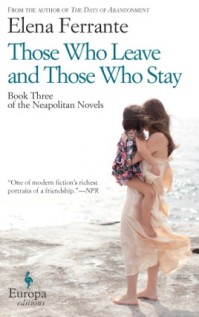Three-hundred-and-thirty-seven pages. Published by Simon and Schuster in North America.
By the end of the read, I wanted to name the book, A Man Called Love instead of Ove. Because, love and acceptance, although rather begrudgingly, is what this book is all about.
 Fredrik Backman takes a classic, cranky-next-door-neighbour tale and spins it into a humorous story of acceptance, burying the hatchet and finding new friendships in unlikely places.
Fredrik Backman takes a classic, cranky-next-door-neighbour tale and spins it into a humorous story of acceptance, burying the hatchet and finding new friendships in unlikely places.
I simply couldn’t put it down. If you enjoyed another Swedish book, The 100-Year-Old-Man Who Climbed Out the Window and Disappeared, by Jonas Jonasson, you will positively relish A Man Called Ove. The convoluted writing style of Ove is peculiar yet easy to read. In his end notes, Backman thanks his editor for making numerous grammatical corrections and suggestions, and for letting Backman ignore them all.
Ove is the curmudgeon next-door, old beyond his years. Life has not been kind to him and he’s bitter because of the hand he’s been dealt. Ove unexpectedly meets the young new neighbours in his townhouse complex when one of them runs over his mailbox while backing-up a U-Haul. Not the best start to a new friendship but it’s the beginning of the blossoming of Ove.
I chose the word blossoming because Ove keeps a sharp eye on the complex for non-approved greenery and flowers residents might plant. But sometimes flowers show up in unexpected places. For Ove, there are rules and they must be obeyed. Playing by the rules is the only thing Ove knows how to do but his neighbours and their trials and exploits force Ove to look beyond the black and white that has been his life.
I won’t spoil the novel with a synopsis of events but they are at times surprising, expected and always serve as an explanation of how Ove got to be the way he is.
A Man Called Ove is a quick and easy read that will lift your spirits and help you see the best in everyone.

 More than not bad for a debut novel. This New York Times best seller, alluring and electrifying, will send you rushing to Google to check out the facts behind the real Manson Murders.
More than not bad for a debut novel. This New York Times best seller, alluring and electrifying, will send you rushing to Google to check out the facts behind the real Manson Murders. The Story of the Lost Child is the fourth and final installment of Elena Ferrante’s Neapolitan chronicles recounting the story of Elena and Lina. Reading the book is like cliff-diving off a high cliff and crashing on the rocks below. It’s a sad ending to a glorious story.
The Story of the Lost Child is the fourth and final installment of Elena Ferrante’s Neapolitan chronicles recounting the story of Elena and Lina. Reading the book is like cliff-diving off a high cliff and crashing on the rocks below. It’s a sad ending to a glorious story. Those Who Leave and Those Who Stay reads like a soap opera. You know the entire cast of characters; new and fleeting ones are introduced and they get themselves into dangerous, sad and fascinating situations. You know they’ll get out of the mess they’re in but you don’t know how, so you keep reading.
Those Who Leave and Those Who Stay reads like a soap opera. You know the entire cast of characters; new and fleeting ones are introduced and they get themselves into dangerous, sad and fascinating situations. You know they’ll get out of the mess they’re in but you don’t know how, so you keep reading. The Story of a New Name is so addictive; you can’t put it down. This is the second installment in Elena Ferrante’s Neapolitan chronicles. It’s so much better than the first, My Brilliant Friend. The novel starts where the first one ends – at Lina’s wedding, when she discovers her new husband has already betrayed her.
The Story of a New Name is so addictive; you can’t put it down. This is the second installment in Elena Ferrante’s Neapolitan chronicles. It’s so much better than the first, My Brilliant Friend. The novel starts where the first one ends – at Lina’s wedding, when she discovers her new husband has already betrayed her.